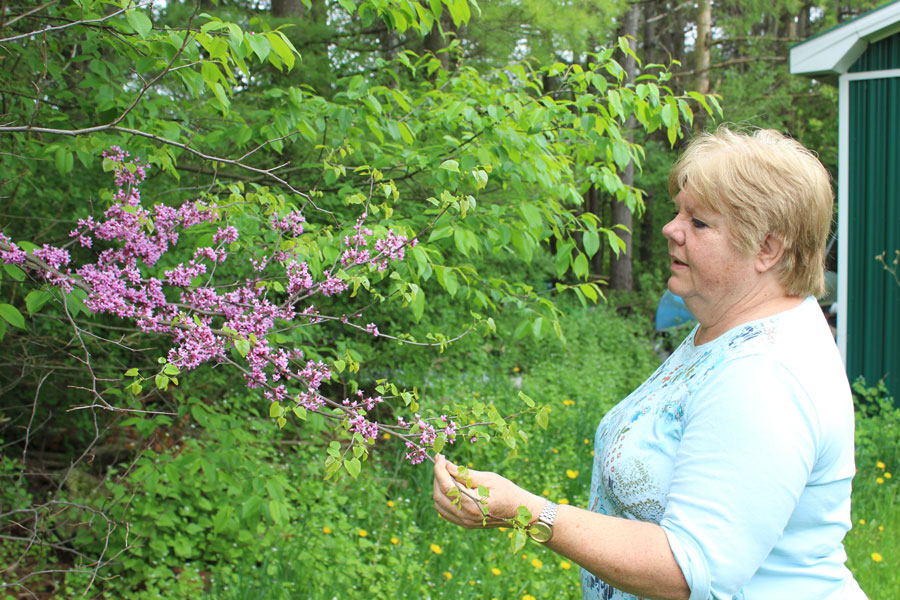PUSLINCH – Flowers may get more glory, but it’s trees that do the heavy lifting to support pollinators and provide food for insects and wildlife.
And native trees planted in ideal conditions thrive, providing immeasurable support to local ecosystems while adding beauty to a landscape.
That’s what native plant specialist Marion Robertson told the Advertiser during a walk around the lush landscape at her home and plant nursery, Bee Sweet Nature, in Puslinch.
There are thousands of trees throughout the 11 acre lot, and Robertson said the majority of them were planted by herself, her husband Rick, and their two children, since they moved there in 1991. Back then, the now tree-filled acreage was an abandoned hay field. “It shows what you can do,” Robertson said. “Just keep planting.”
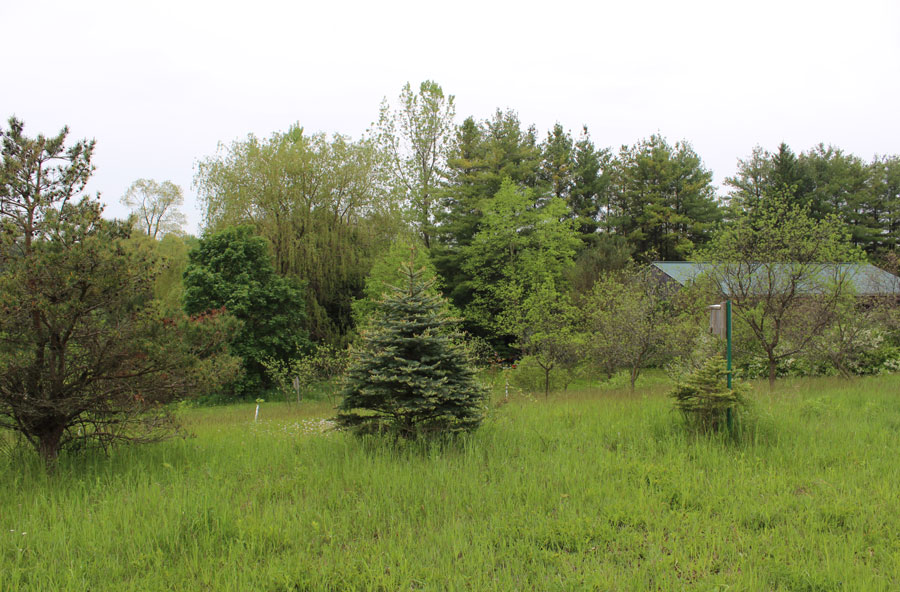
There are thousands of trees growing at Bee Sweet Nature, in what was once an abandoned hay field.
Standing under the shade of a few of her favourite trees, Robertson gleefully explained their characteristics and what they contribute to the ecosystem, while the humming of bees resounded above her. Occasionally the conversation was interrupted by sightings of colourful birds perched among the branches.
“This is not a get-rich project,” Robertson said, referring to their plant nursery, which mostly sells young trees to conservation authorities, municipalities, individuals and organizations. “It’s about getting trees back out where they belong.”
She said some people are afraid of planting native trees, but there’s no reason to be, as when planted in the right conditions, and watered for the first year, these trees will flourish without fertilizers, soil amendments or maintenance.
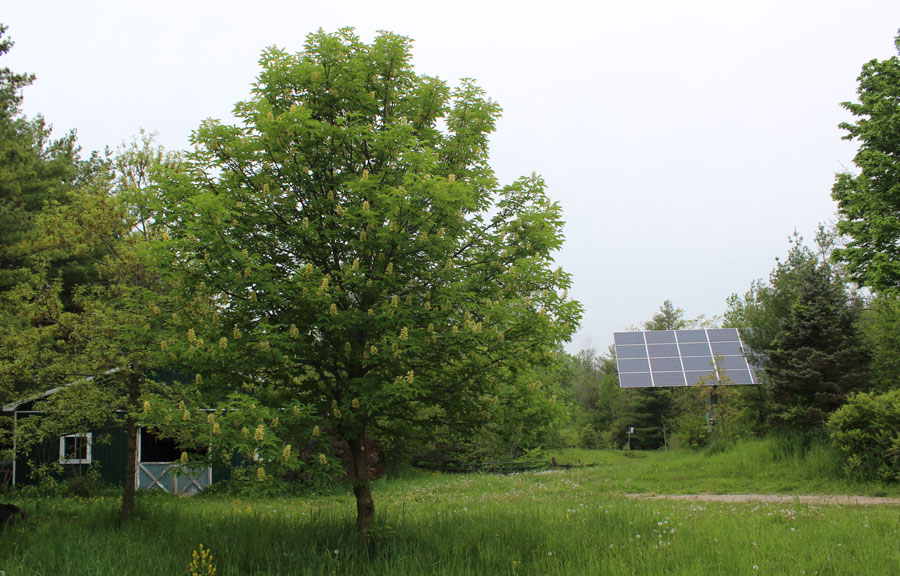
A mature Ohio buckeye stands about 25 feet tall and thrives in a range of conditions.
Wildflowers
The Robertsons also sell native wildflowers and grasses at the nursery, each raised from seeds collected from plants in the wildflower meadow on the property, where new seeds are added frequently to keep the genetics varied.
This includes tall meadow rue, wild bergamot, bottlebrush, milkweeds, dark mullen, coneflowers and cinquefoil, Robertson said, and “I could go on and on.”
Infographics are displayed that outline each plant’s ideal growing conditions, native range, medicinal properties, and the insects it supports.
Wild bergamot, for example, is a “favourite food for bumblebees and [other] native bees and is a larval host to the hermit sphinx moth, orange mint moth, and raspberry pyrausta moth.”
And pale-purple coneflowers are favourites of bees and butterflies and larval hosts to silvery checkerspot butterflies.
“They all have their purpose,” Robertson said. “People just think of monarchs and milkweed [monarchs’ larval host], but all the pollinators need help.”
A larval host is a plant that provides nutrients to caterpillars. Some pollinators, including monarchs, are specialists, meaning the caterpillars can only survive on particular plants.
‘Adding value to wildlife’
For Robertson, “gardening is all about adding value to wildlife.”
And while wildflowers do add value, it’s trees that make the biggest impact. Robertson calls native trees the “workhorses of an ecosystem.”
“You’d need an acre of wildflowers” to do the work of one tree, Rick chimed in.
Native maples, willows, birch, hickory, cherry and oak are examples of trees that do significant heavy lifting to support pollinators.
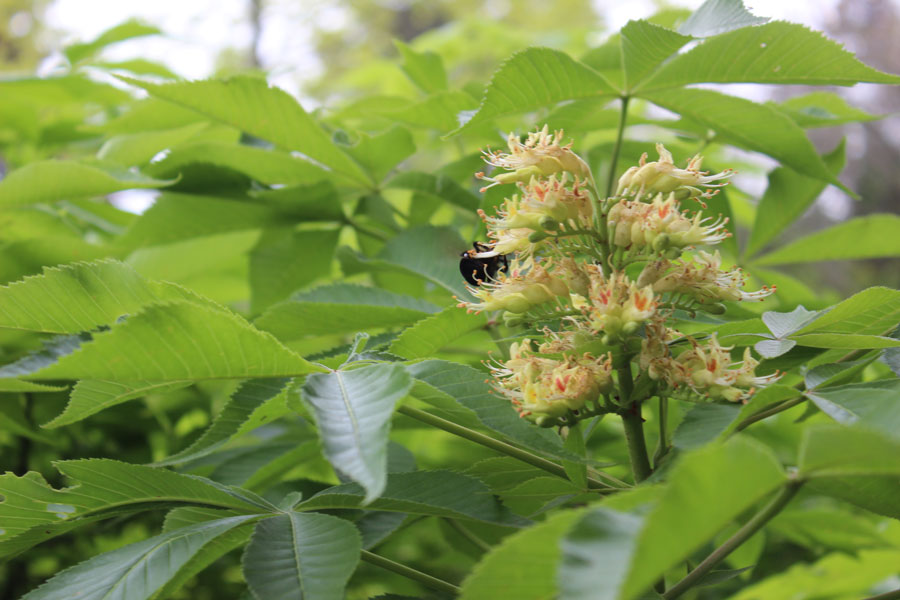
A bee crawls out of sight on the flowers of an Ohio buckeye tree at Bee Sweet Nature.
Another heavy lifter is the Ohio buckeye, a small tree with large clusters of pale yellow flowers that bloom in spring and attract hummingbirds, butterflies and bees.
It produces nuts that look like chestnuts, and Marion calls the tree “our native chestnut.
“It’s so rare in Canada that there’s only one wild population left – on Walpole Island in the St. Clair River,” she said. “If we’re not careful, we will lose it.”
The tree has “huge ecological value,” Robertson said: its spring flowers providing food for overwintering queen bumblebees and caterpillars.
Some of the trees at Bee Sweet Nature are nearing extinction, including common hop trees, which are larval hosts to giant swallowtails; and eastern redbud trees, favourites of hummingbirds, bumblebees, mason bees, and mining bees.
Eastern redbuds are eye-catching with tight clusters of pink flowers growing right on their branches in April and May. Cardinals and grosbeaks eat its seeds.
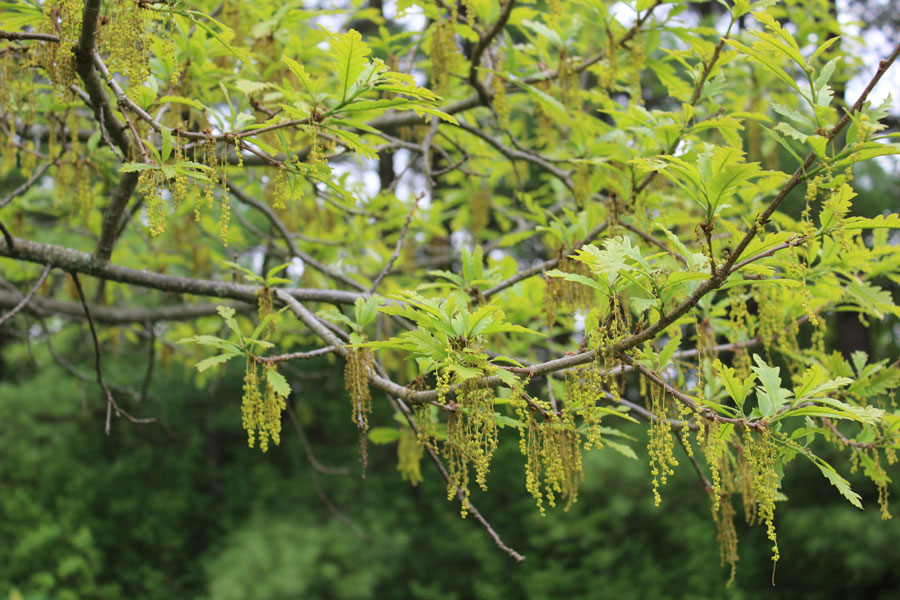
A bur oak blooms at Bee Sweet Nature in Puslinch.
Bur oaks grow tall and produce acorns that feed rabbits and squirrels, and their leaves provide food for almost 400 different insects, Robertson said.
Many trees offer a “trifecta effect” to the environment, she said, producing flowers that support pollinators, leaves that provide food and habitat to insects, and nuts and fruit that feed mammals.
Protecting trees
“You plant a tree, and throughout the whole season you’re giving something to the environment,” she said. “It’s pretty impressive.”
Robertson said protecting native trees is particularly important here in southern Ontario, the area of Canada with the highest plant diversity but also the most strain on the environment, with a dense population and large amount of infrastructure – “such intense pressure.”
She said plants are going extinct at a higher rate here than anywhere else in Canada – “we have the most diversity, and the most loss,” so it’s important to keep supporting native plants.
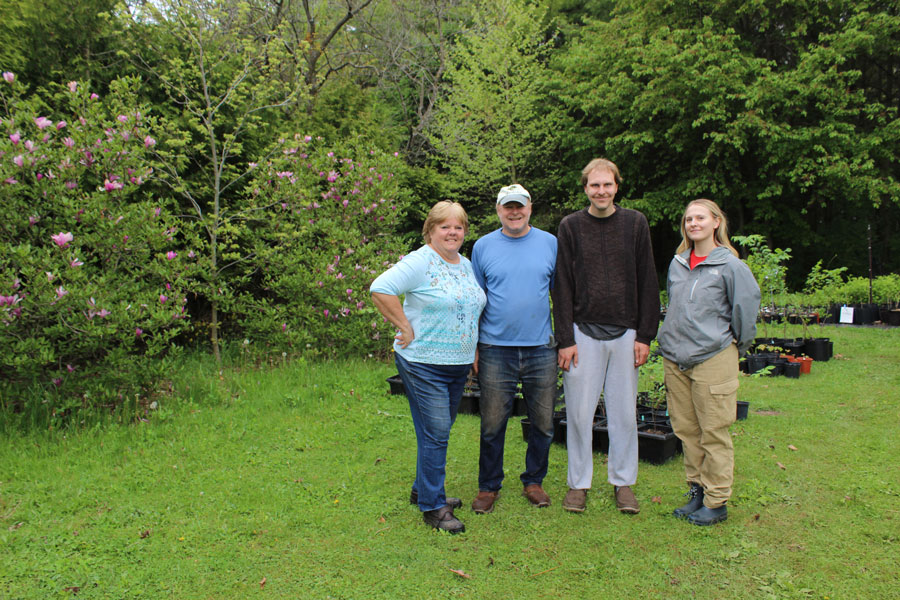
From left, Marion, Rick, their son David Robertson and co-op student Abi Tetlow work together to care for the trees at Bee Sweet Nature, along with the Robertson’s daughter, who is not pictured here.
Pollinator festival
The community is invited to check out the trees at Bee Sweet Nature on June 15 during its fourth annual Pollinator Festival, which will include tours of the property and information about supporting native pollinators and discovering Ontario’s trees and shrubs.
Robertson said the festival will be fun for all ages, and she encourages youth to come out and gain an appreciation for native plants. “If you don’t love it, you aren’t going to try to save it.
“It’s all about getting that next generation interested,” she said. “Rick and I are getting a little long in the tooth,” she laughed, and they’re preparing to pass the baton along to the next generation.




